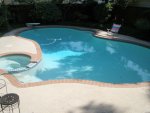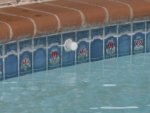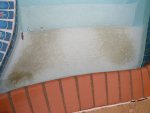With all the recent posts concerning plaster, I thought I would throw out another question that has been bothering me ever since I inherited my pool.
As I have stated in other posts, my pool has the original plaster from build date in the late 1970s. As you can probably imagine, it is rough and wearing thin in many places. It needs a replastering job, that is not in question. My question is: When does the need for a new finish become critical for the integrity of the pool structure vs replastering for obvious aesthetic reasons?
You have guessed correctly that I don't have the money right now for this project, and I would like to string it out as long as possible without putting the overall structure in jeopardy.
Here are a couple of pics to show the condition. The second one shows wear on the first step.[attachment=1:2et9fb71]deep end jets distance.jpg[/attachment:2et9fb71][attachment=0:2et9fb71]pool.jpg[/attachment:2et9fb71]
Thanks in advance,
Dave
As I have stated in other posts, my pool has the original plaster from build date in the late 1970s. As you can probably imagine, it is rough and wearing thin in many places. It needs a replastering job, that is not in question. My question is: When does the need for a new finish become critical for the integrity of the pool structure vs replastering for obvious aesthetic reasons?
You have guessed correctly that I don't have the money right now for this project, and I would like to string it out as long as possible without putting the overall structure in jeopardy.
Here are a couple of pics to show the condition. The second one shows wear on the first step.[attachment=1:2et9fb71]deep end jets distance.jpg[/attachment:2et9fb71][attachment=0:2et9fb71]pool.jpg[/attachment:2et9fb71]
Thanks in advance,
Dave






 I don't know where I got the notion that plaster was more than an aesthetic finish. I thought I had read somewhere that plaster was the water tight element of the pool, and without it water would seep through the gunite, rusting rebar, and generally eroding the stability of the shell.
I don't know where I got the notion that plaster was more than an aesthetic finish. I thought I had read somewhere that plaster was the water tight element of the pool, and without it water would seep through the gunite, rusting rebar, and generally eroding the stability of the shell.






